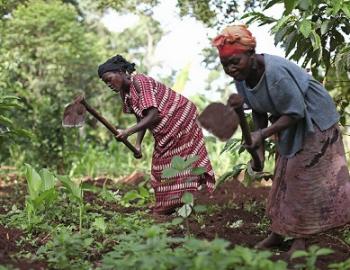REPORT: Assessment of climate-smart agriculture options in Nepal
REPORT: Assessment of climate-smart agriculture options in Nepal
Nepal’s agriculture sector, which accounts for around three quarters of employment and one quarter of country’s Gross Domestic Products (MoAD 2015), is highly affected by current climate variability, uncertainty and extremes. The major challenges being faced by Nepalese Agriculture sector are degradation of natural resources and increasing frequency of climatic risks (Deshar, 2013; Krishnamurthy, 201; IDS-Nepal, PAC, and GCAP, 2014). Evidences indicate that climate in Nepal is already changing and the impacts are being felt (MoE, 2010; Karki and Gurung, 2012; IPCC, 2014). Rise in average temperatures, changes in rainfall patterns, increasing frequency of extreme weather events such as severe droughts and floods and shifting agricultural seasons have been observed in different agro-ecological zone of Nepal. In recent years, long drought spells during monsoon and increased temperatures and unseasonal heavy rains during winter have caused serious distress to agriculture dependent communities in many locations of the country. If the Sustainable Development Goals of ending poverty, achieving food security and promoting sustainable agriculture is to be realised, climate change adaptation interventions need to be implemented in earnest.
The impacts of climate change on agriculture are more pronounced among smallholders, who are highly exposed and sensitive to climatic threats and have poor coping capacity. The smallholder farmers with average landholding is less than 0.5 hectare accounts more than 80% (CBS, 2011). These farmers are highly vulnerable to climatic variability due high exposure to climate change and low adaptive capacity. Evidently, the national yields of major cereal crops i.e. rice, wheat, maize and millet are less than half the global average (MoAC, 2011; FAOSTAT, 2012). A study in Nepal shows that the estimated direct costs of climate change is equivalent to 1.5-2% of current GDP/year in average years, which magnifies by gender and area (IDS-Nepal, PAC, and GCAP, 2014). This is expected to hit the poor and already vulnerable households more compared to others and may pose a challenge to poverty reduction strategies. In addition to climate, social changes like outmigration of male youths have increased women’s workload in agricultural activities. Women also face structural power inequalities as well as poor access to resources and information required to cope with shocks and stresses and recover from climate-induced impacts. Besides, Dalits, indigenous people and disadvantaged families, whose livelihoods are highly dependent on agriculture, constitute the highly vulnerable population. The baseline study confirmed that Dalits as well as women and Janajati households are the most vulnerable groups compared to others (for details see: Bhatta et al., 2015). Therefore, there is an urgent need to identify and promote technologies and practices that can increase farm productivity and farmers’ adaptive capacity and, as co-benefit, ability to mitigate.
Picture: Central Asia Hub/Alma Karsymbek



